Site Search
- resource provided by the Forum Network Knowledgebase.
Search Tip: Search with " " to find exact matches.
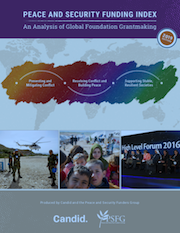
The latest edition of this study found global philanthropic support for efforts to prevent, mitigate and resolve conflicts totaled $328.2 million in 2016 from 326 foundations and 2,600 grants. Funding for peace and security remains insignificant relative to foundation funding overall, accounting for just 0.7 percent of the $32 billion given by foundations in Candid's 2016 FC 1000 data set.
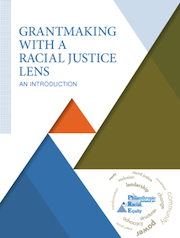
In the 12 years since the original Grantmaking with a Racial Equity Lens guide was published the country’s political, economic, and cultural landscapes have undergone multiple, dramatic changes. Public engagement and organizing against racism has risen to historic levels and we've seen racial justice concepts take root in such mainstream contexts as Washington Post articles on White privilege and wider use of the phrase “systemic racism.” And funders have worked hard to keep up. In response to these conditions, PRE has produced an updated guide. The daily practice of using a racial equity lens in social change as well as in grantmaking has established a baseline understanding of structural racism and has led to new insights, definitions, and nuances.
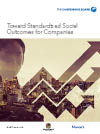
A new pilot study from The Conference Board and the Impact Genome Project® (IGP) introduces standardized social outcomes to help measure and compare the performance of societal investments. The standardized outcomes allow for benchmark metrics, including efficacy rates and cost per outcome. The study used data from 16 companies whose funding contributed to nearly 650 nonprofit programs. The benchmarks provide new insights into the effectiveness of corporate societal investments.
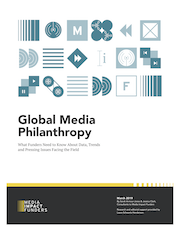
With support from the Bill & Melinda Gates Foundation, Media Impact Funders has been researching trends, challenges and opportunities for global media funding. The research in this report draws on a variety of sources: data from the media data map through 2015, results from a survey of leading organizations engaged in funding media-related projects around the world, analyses of existing literature and reports, and insights offered by experts across a range of media funding issues.
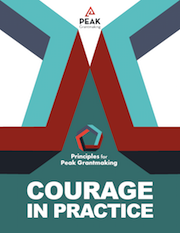
Many in our sector are talking about big ideas such as equity and inclusion, narrowing the power gap in our sector, being authentically engaged in our communities, listening and learning from our partners, and living our values in our practice.
We can help the sector move beyond conversation to action.
We believe our members have the power to bring tangible, real-life, and practical implementation to these big ideas to build a bridge between strategic vision and action. To this end, we support their professional growth through developing the competencies that will help them lead this change.
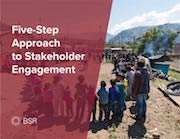
In 2019, the landscape of digital communication, international agreements and investor expectations makes stakeholder engagement more important than ever: Digital and social media amplify voices of the public, including civil society organizations; international agreements such as the UN Guiding Principles and Sustainable Development Goals have been established and globally accepted; and investors are significantly more focused on company approaches to environmental, social, and governance (ESG) issues, which in turn necessitate consideration of all stakeholders, not just shareholders.
First published in 2011, this updated guide from BSR is a response to developments over the last seven years, all of which necessitate a far clearer focus on stakeholder trust by corporations. This report aims to provide a comprehensive toolkit that incorporates the latest thinking while maintaining the clarity and practicality of their five-step approach.
A combination of curated, synthesized, and original content, this library of resources is intended to help foundations and investors at different stages of practice begin to explore the many ways they can grow and deepen their commitments to racial equity and impact investing.
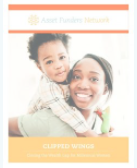
Asset Funders Network’s latest report, in collaboration with the Closing the Women’s Wealth Gap (CWWG) and the Insight Center for Community Economic Development reveals the current economic reality for millennial women and the primary drivers contributing to their wealth inequities. It illustrates how despite important gains in college attendance rates and career opportunities, millennial women’s wealth lags behind that of men. The median wealth holdings of single millennial men is still 162% greater than single millennial women.
While the report confirms that more research is needed to understand the full complexity of issues facing millennial women, this new brief demonstrates how there is a unique opportunity for philanthropy to support and pioneer groundbreaking work that can lead to a more economically just and inclusive society.
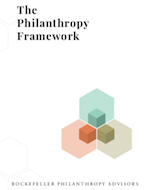
Rockefeller Philanthropy Advisors has released The Philanthropy Framework, a tool for analysis and planning to guide emerging and established philanthropies to better align resources for maximum impact. Created with input from leaders from more than 50 foundations worldwide, the tool seeks to address fundamental changes in philanthropy and the world such as generational shifts in attitudes, massive wealth creation, diversity of capital, new models for impact, and new operating environments among others.
It lays out three core elements for philanthropists to consider when determining how to maximize their impact:
- Charter, the organization’s scope, form of governance, and decision-making protocol
- Social Compact, its implicit or explicit agreement with society about the value it will create
- Operating Model, the approach to the resources, structures and systems needed to implement strategy.
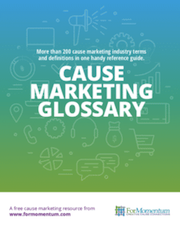
This handy reference tool contains the definitions for over 250 cause marketing industry terms used by savvy businesses and nonprofit organizations. When you meet with partners, whether you are a corporation or a nonprofit, it’s always beneficial to speak their language and show them that you fully understand their marketing landscape. We’ve taken some buzzwords straight from this year’s headlines and added others that have been around awhile but have taken on added importance in 2019.
Every person wants to lead a safe and healthy life. We want the opportunity to fulfill our greatest potential, and to receive the support and guidance we need to travel down our own unique path. We wish this for ourselves and seek it for our children and loved ones.
In fact, communities all over the country go to great lengths to create conditions for young people to thrive. Every year, efforts to promote youth wellbeing amount to hundreds of billions of dollars in public expenditures in education, health care, community development, and related fields. Together with significant resource contributions from the philanthropic, nonprofit, academic and private sectors, these investments make clear that creating, promoting, and sustaining health and safety for young people is a national priority.
This report details how funders can embrace the power of young people to advance healthier and safer communities.
The long, hard work of advancing racial equity is deeply personal work for everyone involved in it. In this video, United Philanthropy Forum members and colleagues share some deeply moving stories of the role that racial equity plays in their personal lives. This is the third video in a three-part Forum video series on racial equity. Our goal with these videos is to spark continued thinking and conversations that will lead to action in our field to reduce inequities based on race and ethnicity. The Forum is grateful to everyone in the video for being willing to share their personal journeys on working to eliminate all disparities based on race and ethnicity.
A corporate member asked for what other corporations do regarding employee’s goal and objectives. Do they include volunteerism or volunteer activities as part of an employee’s review, or their annual goals?
Effecting social change in a rapidly changing political environment and an increasingly interconnected world requires foundations to adopt a learning orientation. Without continuous learning, grantmakers—and thus boards and trustees—are unaware about what is working where, with whom, and why, as well as what changes or refinements are needed in order to achieve the grantmakers’ desired results.
Researched and written in collaboration with GEO, this toolkit provides a fresh set of resources for grantmaker CEOs, evaluation staff, and senior leaders to use to engage their boards and trustees in conversations about the importance of strategic learning in their decision-making and deliberation processes.
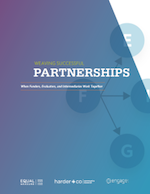
This report is designed to inform stakeholders in complex change strategies involving multiple partners, funders, intermediaries, and evaluators. It is framed by a literature review on partnership structures, trust building, and developing a learning culture, and offers case studies of three different partnerships. The report was commissioned by The James Irvine Foundation and collaboratively developed by Equal Measure, Engage R+D, and Harder+Company Community Research.
Please show your support of CNJG by displaying the following "Proud Member" graphic on your website, in social media posts, on publications, and in other communication efforts as appropriate.
This paper from the Kresge Foundation, discusses developments in the conception and assessment of Creative Placemaking initiatives and, more generally, the assessment of comprehensive community-development strategies.
CNJG's 2018 Annual Meeting & Holiday Luncheon pre-meeting workshop with Michelle Greanias from PEAK Grantmaking focused on how foundation CEO’s, program officers, staff, and trustees could engage internally to put values-based grantmaking into practice.
Walk the Talk Video
It’s well established that employee engagement, defined as a willingness to do more than the job minimally requires, drives corporate performance. This report examines one potential driver of employee engagement - corporate volunteering, defined as employer-organized opportunities for employees to support a charitable cause or otherwise make a positive social impact with their contribution of time.
This report explores how companies are integrating diversity and inclusion into their corporate citizenship and responsibility priorities. With support from the Walmart Foundation, CECP led a year-long inquiry to identify and share actionable insights and best practices that corporate leaders can learn from and apply in their own companies. The report identifies six key D&I trends, as well as case studies, latest knowledge, methods, and valuable insights.
